




WILL CHAPPELL Citizen Editor
Sammy’s Place, a Nehalem charity serving individuals with intellectual and developmental dis-abilities, recently received a $744,000 grant to design an affordable housing development for land it owns in Nehalem.
Julie Chick, executive director of Sammy’s Place, said that the charity’s staff and board are working to develop a new model for the community, with both intellectually and developmen-tally disabled, and those without disabilities living side by side. Chick said that this plan, while still in its early stages, is part of a larger initiative by the organization to change the communi-ty’s perception of the capabilities of those with disabilities.
“What we’re doing is integrated housing so that people with disabilities finally have an opportunity that they have not been afforded in the past to participate in the community of their choice alongside their peers,” Chick said.
Kathy Jean Hrywnak founded Sammy’s Place in 2006 with a mission of giving people with intellectual and developmental disabilities (IDD) on the north coast opportunities for respite. In 2014, following encouragement from Hrywnak, Chick, whose son has Downs Syndrome, joined the nonprofit’s board of directors, on the condition that the organization expand its mission to include creating living and working opportunities for the community.
In tandem with broadening its vision, the organization also assumed organizational responsi -

bil-ities for Buddy Walk in Seaside and turned the event into a fundraiser that generated over $100,000 in three years.
The organization used that money to develop a strategic plan for fu-ture programs for those with IDD and their families. Around that same time, in 2018, Chick was involved in the county’s housing committee, with then-Commissioner Bill Baertlein, when he brought the property in Nehalem’s urban growth boundary to her attention. Formerly owned by a logging truck driver, the three-acre property went into foreclosure follow-ing nonpayment of property taxes and fell into county ownership after nobody bid on it at
auc-tion. Baertlein offered to deed the property to Sammy’s Place, under an Oregon law that al-lows counties to give property to nonprofits for specific uses, including developing affordable housing.
At that point, the property was overgrown with blackberries and other plants and the dilapi-dated house and soil had extensive hazardous material concerns. But, luckily for the charity, the property’s condition and planned use came to the attention of officials at Oregon’s Department of Environmental Quality and the United States Environmental Protection Agency, who volun-teered to donate staff time to remediate those concerns.
The two agencies
spent more than $250,000 on the clean-up over the course of several years, and today the property is clear save a small storage shed, firepit and the concrete pad from the old house.
With that work completed earlier this year, the organization applied for a grant from the Fairview Trust, established when the state’s mental hospital shuttered in 2000, and was awarded $744,000 to pay for the project’s soft costs.
Now, Chick, who became the organization’s executive director in 2021, will work with the char-ity’s board and housing commission to develop a plan for the site.
Chick said that those
at the charity see the project as an opportunity to rethink the way that those with IDD live. In Oregon, throughout the 20th century, members of the community were institutionalized at Fairview Hospital, while in the last 20 years, since Fairview closed, people with IDD have been housed in group homes for five to seven people, according to Chick.
While that approach is better than the institutional one that preceded it, Chick said that she and others at Sammy’s Place think it is time for a new paradigm.
“Now, that’s 20 plus years old and we’re going

WILL CHAPPELL Citizen Editor
Candidates running for offices in the November election submitted nominating paperwork by September 5, and the Tillamook County clerk’s office submitted a final ballot on September 10. Voters will decide their representatives in Oregon’s first United States congressional district, 32nd state house district and at the city level and weigh in on five statewide ballot measures and one countywide bond. In Oregon’s first congressional district, incumbent Democrat Suzanne Bonamici is facing off against Republican Bob Todd and Libertarian Joseph Christman. Bonamici has served in con-gress since 2012 and became Tillamook County’s representative in 2022, after redistricting. Incumbent Republican Cyrus Javadi will face Democrat Astoria City Councilor Andy Davis in the race for the 32nd state house seat. Javadi was first elected in 2022.
Statewide ballot measures up for consideration this year include giving the state legislature the ability to impeach executive branch officials, establishing an independent public service compensation commission to determine salaries for top state officials, transitioning to ranked-choice voting, issuing residents rebates from a tax increase on large corporations and requiring marijuana producers and retailers to sign labor-peace agreements with unions trying to represent their employees.
See
WILL CHAPPELL
Members of the Cape Meares Community
Asso

ciation have come together over the past three years to coordinate the protection of 107 acres of forest, which was recently purchased by the Conservation Fund. Now, staff at the fund are working with officials at the United States Fish and Wildlife Service to coordinate the purchase of that parcel and another 106-acre parcel previously donated to the association for inclusion in the Cape Meares National Wildlife Refuge. Should the
sale materi-alize, the forest will be protected in perpetuity, securing Cape Meares’ drinking water source and more than doubling the size of the wildlife refuge. Cape Meares Community Association President Bev Stein said that the project had been built on volunteer effort and that she hoped it would inspire other communities on the coast who are trying to protect their drinking water sources. “It’s a great example for
other communities,” Stein said, “because a lot of communities on the coast now are struggling with these issues and the fact that we, a little community, can put this together, with you now practically nothing and just persistence is a great example for oth-er communities.”
Progress towards the purchase began in 2021, when a member of the community
Rockaway Beach’s City Council voted on September 11 to seek to recover legal fees from the realtors in the recent legal challenge to the city’s balloting methodology. Council also approved a new administrative warrant procedure that will allow city staff to seek warrants and enter properties with code violations to remediate those. The decision to seek legal fees of over $20,000 from Justin McMahan and Daniel Howlett was made by a 4-0 vote, with Councilor Kristine Hayes abstaining. Council discussed the decision during an executive session with the city’s counsel for over an hour before returning briefly to regular session to make the decision past 9 p.m.
In a petition for a writ of mandamus filed in early August, McMahan and Howlett challenged the city’s use of position numbers in elec-
tions for city council seats. The petition contended that the city’s charter had been violated when position numbers were added to the ballot in 2014 without a council vote. After a daylong hearing, Tillamook Circuit Court Judge Jonathan Hill ruled that an ordinance passed in February updating the nominating process for council seats had codified the posi-tional voting approach and that the city could proceed with that methodology in this year’s election. Oregon statute relating to writs of mandamus allows for the prevailing party to recover attor-ney’s fees when certain conditions are met, with a judge reviewing the case to determine whether to make the award unless both parties agree to it. Tim Volpert, McMahan and Howlett’s attorney, said that he would be advising his clients to defend the attempt to recover the fees and to appeal any fee award forward.
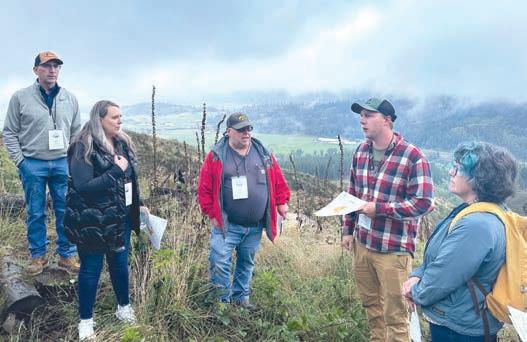

Family Dairy Farm, for a tour with a focus on the farm’s robotic operations.
introductions. The Working Lands and Water Cooperative was founded to increase awareness of the practices employed by the county’s natural resource industries and the importance of the products provided by those industries. After introductions, the group loaded on to buses and headed to the Oldenkamp

Luke Oldenkamp, co-owner of the dairy, told the tour members about the automated milking robots that the farm first installed six years ago. The six robots are in the barn with the cows and the animals are tracked through chips on collars.
Cows are enticed into the robotic milking stalls with feed that is dispensed at a rate that matches the duration of milking, which takes five to eight minutes. Oldenkamp said that the cows enjoyed the process and that they would often try to enter the milking stalls more than necessary, which on average is three times a day.
The robots also monitor the cows’ health and the milk’s quality on an ongoing basis and will alert dairy staff to any problems it detects. Oldenkamp said that the transition to robotic oper-ations had cut the farm’s workday from 18 hours to around 13 and reduced the number of full-time employees from nine to four.

The farm also uses an automated system to feed its animals, with robots mixing grass cut at the farm with



alfalfa and corn in large vats that then use a system of inductive rails to dis-pense the food throughout the dairy barns.
Kate Lott, the Tillamook County Creamery Association’s director of farm engagement, said that around 10% of the association’s members have robotic milking parlors, with the cost and tech-nical complexity of the systems being the main hurdles to adoption. Oldenkamp said that each of the farm’s six robots had cost over $200,000 when purchased new six years ago and that he handles routine maintenance and data maintenance.
Oldenkamp also discussed the farm’s manure management practices, which are anchored by alley scrapers that are dragged by chains and move the cows’ waste into the farm’s manure tank.
In the tank, a recently installed system of metal piping aerates the manure to prevent it from producing methane and to maintain its suitability as fertilizer. Oldenkamp said that he used to view manure as a burdensome byproduct but that he has come to view it as a valuable re-source, noting that the farm was able to forego chemical fertilizers completely this year.
Lott said that the application of manure to fields was regulated by the state and that Oregon has the most stringent requirements in the nation to protect water quality during that process. Lott explained that the creamery association manages soil testing responsibilities for its mem-ber farms and noted that the soil in Tillamook County had one of the highest rates of carbon sequestration in the state.
Lott also discussed association members’ efforts to prevent their herds from wandering into waterways on
their property and to improve the streams’ habitat functionality with riparian plantings, dating back to the 1990s.
The group then returned to the bus and proceeded to a Stimson Lumber Company tree farm just southeast of Tillamook.
On the farm, Jon Wehage, a Stimson forester, discussed the company’s initiatives to promote fish passage and the impacts of Oregon’s private forest accords, which were updated last year.
First, the tour stopped at a 14-foot culvert and Wehage said that the private forest accord had increased the required size for culverts from matching the width of streams to being 1.2 times as wide.
Wehage explained that in the past, landowners had used pipes to direct streams’ flow but that they prevented fish passage due to higher flow rates and drops at the end of pipes. Replacing those pipes with culverts allows fish to access the upper reaches of their spawning streams more easily and helps to prevent detritus blocking streams and causing road washouts. Stim-son had moved towards replacing pipes with culverts for the last twenty years, even before the accords, owing to the decreased maintenance costs.
The group then proceeded to an overlook to examine a recent timber harvest, with Rick Welle from Stimson explaining the private forest accords’ impact on the sale. Welle said that in-creases in buffer zones around streams and new protections for seasonal streams had led to a 6% increase in the amount of land that was unavailable for harvest.
The group then had lunch in the woods before loading back into the buses to make their way to the Trask Fish
Hatchery.
At the hatchery, the group first toured the hatch house, where eggs are kept on racks of trays while the fish gestate before being transferred into larger tanks. Amy Bennett from the hatch-ery detailed the lifecycle of salmonids that are raised at the fishery, showing a display of the different stages. The group then moved to the hatch house’s second story and examined the facility’s filtration system that removes sediment from water and used UV light to treat it be-fore it is used for spawning.
Trask Fish Hatchery was founded in 1914 and currently produces 150,000 fall chinook salmon, 400,000 spring Chinook salmon, 100,000 brood stock coho salmon for the Trask River and 150,000 wild brood stock steelhead annually. Next, the tour stopped at the hatchery’s fish passage barrier which helps to prevent the spread of disease by limiting the territory the fish have access too. The barrier is also next to the hatchery’s upper tanks and the intake on the Trask River that supplies the hatchery’s lower tanks.
After inspecting the upper tanks and winter steelhead that currently resided in them, the tour returned to the lower part of the hatchery. There, spring coho were being gathered as they re-turned up the Trask before staff recover their tracking tags. Staff then demonstrated the method used to measure the fish and recover the tags, which consists of chopping off the portion of their snouts with a tag and sending them to another hatchery for analysis. The tags help the Oregon Department of Fish and Wildlife to track the fish’s returns and the amount of time they spend in the ocean.


BY PIERCE BAUGH FOR THE CITIZEN
They’re coming. From north, south, east (not west—can’t get more west than Tillamook) they’re coming to walk the coast.
The North Coast Land Conservancy will be hosting its CoastWalk Oregon 2024 from September 20-22. People from all over the country will flock to the noth coast to walk the north section of the Oregon Coast Trail for three days. The north coast section of the trail is 120 miles long, and each year CoastWalk walks a 30mile portion of it.
The walk is a fundraising event with $42,000 raised last year to support the protection of im-portant land and water in the north coast.
The event has attracted people from Washington, California, Montana and even Texas in the past. This will be CoastWalk Oregon’s eighth year, though 2020 was skipped due to the pan-demic.
The route changes every year, with this year’s running between Ecola State Park and Nehalem Bay State Park, walking roughly ten miles a day. It’s led by experts—the main leader being a retired geologist who has done six expeditions to Antarctica—including naturalists and other experts of the Oregon Coast who give participants an in-depth
Finalized
From Page A1
Tillamook County is asking voters to approve a $24 million bond to support an upgrade of the county’s emergency radio system. Tillamook County Sheriff Josh Brown will be on the ballot running unopposed, as will Tillamook County Clerk Christy Nyseth.
Two director positions are open at the Tillamook People’s Utility District, with Tamra Perman and Maile Samek vying to represent zone one, while Justin Aufdermauer, Lonnie Jenck and Har-ry Hewitt are squaring off in the race for position three.
In the city of Tillamook, four of the council’s six wards are up for election. Garrett Noffsinger in ward one, Nicholas Torres in ward five and Sylvia Schriber in ward six are running unopposed. In ward three, incumbent Brian Reynolds is facing a challenge from Richard Reidt.
Bay City Mayor Liane Welch is running unopposed, and Tim Josi, Justin Howard and Colin Jones submitted their candidacies forsx three open positions on city council.
Garibaldi Mayor Kathryn Findling is also running unopposed, but voters in that city will have to select two from the slate of Sandra Tyrer, Cheryl Gierga and Terry Kandle for city councilor.
In Rockaway Beach,
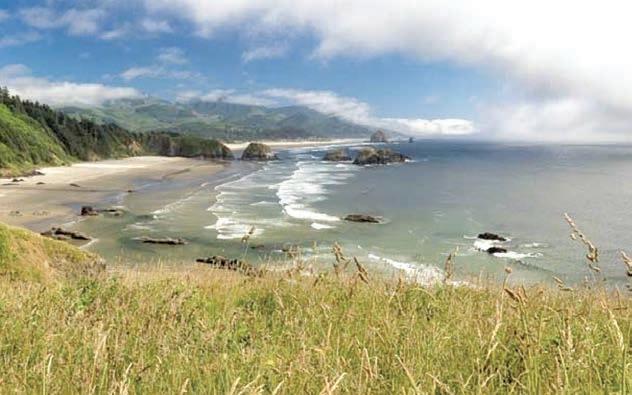
knowledge of the coast. Eleven volunteers have been working since November to organize this year’s event.
All the planning comes in handy in case of unexpected variables, like last year’s wildfires that resulted in the CoastWalk having to make changes to its route.
The walk also includes volun-
incumbent Mayor Charles McNeilly is facing two challengers, Dave Winchester and Rodney Breazile, in his bid for reelection. Councilor Mary McGinnis is running unopposed for position one, while in position two, two incumbents, Kristine Hayes and Tom Mar-tine, are squaring off. In position three, currently held by Hayes, Kiley Konruff and Stephanie Winchester are on the ballot, incumbent Alesia Franken is facing Justin McMahan for position four and incumbent Penny Cheek is being challenged by Debra Reeves for position five. Wheeler will have a new mayor, with Clif Kemp opting not to run for reelection, giving voters the choice between Denise Donohue and William Goulardt. Four candidates, Mary Leverette, Garry Gitzen, Heidi Stacks and
teer nurses and doctors as well as radio operators since part of the trail does not have cellular coverage.
CoastWalk is organized around the tides. So instead of doing a straight walk from Ecola State Park to Nehalem Bay State Park, or vice versa, participants will be walking in segments that best account for the tide.
Gordon Taylor are running for three open positions on the city’s council.
Nehalem Mayor Phil Chick is running unopposed, while both open council positions are being contested, with Angela Hanke, Kristina Quintana and Lydia O’Connor running for position two and Dave Cram and Vern Scovell vying for position three.
Nehalem voters will also decide whether to renew a prohibition on psilocybinrelated busi-nesses in the city for two years.
In Manzanita, incumbent Mayor Kathryn Stock is running unopposed and incumbent councilors Thomas Council and Jerry Spegman are up for two open council seats.
Voters in Manzanita will also vote on whether to change the city’s water billing from its cur-rent, quarterly cycle to a monthly one.
The hiking will be done in the morning, giving participants the afternoon and evening to explore Cannon Beach, which will be hosting the Earth & Ocean Art Festival at the same time.
Visitors are amazed by the wildlife of the Oregon Coast.” It’s always great to see wildlife along the route, whether it’s shorebirds or the majestic elk,” said Kassia
Nye, Development Director for the North Coast Land Conservancy. “For visitors, they are always so impressed with these charismatic megafauna.”
A lot goes into planning the CoastWalk. Nye is grateful to the Cannon Beach Tourism and Arts Commission and Chamber of Commerce for their support, as well as the support of the event’s sponsors which can be seen at coastwalkoregon.org. “We are really grateful because they help. It’s the tiniest little details of the event that make it so special,” said Nye.
The mastermind behind the CoastWalk Oregon is Bonnie Henderson, a former North Coast Land Conservancy staff member who has authored books on hiking the Oregon Coast. “She loves this trail, and she loves this area, and she said, ‘Hey, why don’t we put on a fundraiser to raise money and promote awareness of this incredible place,’” said Nye. And years later, the CoastWalk is going strong.
“It builds this really lovely community of conservationist people who want to protect this im-portant ecological habitat,” said Nye. CoastWalk oregon costs $410 per person, and people can register at nclctrust.org or at coastwalkoregon.org.











BY WILL CHAPPELL

WILL CHAPPELL CITIZEN EDITOR
Tillamook County is asking voters to approve a $24.4-million bond to support a major upgrade to the county’s emergency radio system on the November ballot.
Communications systems administrator Ruben Descloux recently took the Headlight Herald on a tour of two of the system’s towers and discussed the current system’s limitations and the benefits of a new system. Built between 2001 and 2003, the current system relies on 12 tower sites across the county that house VHF repeaters to coordinate communications among first responders.
The analog system relies on relays to pass messages between distant areas of the county, while a new digital system would be able to facilitate countywide communications directly. The current system also only allows one person to talk at a time, whereas the digital system would support talk groups for various agencies, each of which would be able to carry on conversations independently and simultaneously.
A large challenge facing the current system is the relative weakness of its signal compared to those transmitted by other organizations with newer equipment, causing interference and sometimes completely blocking the county’s signal. Using the same
technology that allows for different talk groups, the new system would also be able to select the frequencies least im-pacted by other transmissions and assign the county’s communications to those.
Descloux said that in addition to cutting down on the noise caused by competing signals, the digital system would also be less impacted by literal noise caused by loose wires and wind at the towers than the analog system.
The proposed system upgrade also includes plans to add a secondary network of weak repeat-ers that buttress the towers to the system’s microwave network, which would further increase signal strength across the county.
A report commissioned by the county and released in 2020 recommended the county’s analog system be upgraded to digital. The report noted that in addition to upgrading the system’s functionality, a lack of replacement parts for the old system would increasingly hamper the county’s ability to keep it operational.
The report also estimated that the project would carry a budget of $20 million, though in the intervening years inflation has pushed that figure to $26 million.
The county has received a $2 million federal appropriation to support the project and is now asking voters to approve a bond to support the rest of the budget.
That question will be on November’s ballot, with
voters deciding whether to approve a 33-cent increase per $1,000 in assessed value to property taxes over the next 16 years. If approved, that would support the construction of a new tower site, equipment upgrades at the existing sites and the purchase of more than 1,000 portable and mobile radios, pagers and control stations for first responder agencies across the county.
Tillamook County Commissioner Doug Olson said that it would take two years to install the new system and that it would come with a three-year warranty, after which the county would be responsible for maintenance. First responders including law enforcement officers, firefight-ers and paramedics would have free access to the system, while other groups would have the option to purchase access.
Olson is also a member of a political action committee that has been formed to promote the project and will be traveling the county over the next months to spread information and awareness of the bond measure.
Olson likes to compare the current radio system to pieces of personal technology that every-body has, like cell phones, to hammer home the point that the county’s reliance on the current system is untenable and would be akin to an individual still watching a tube tv or making calls on a flip phone.
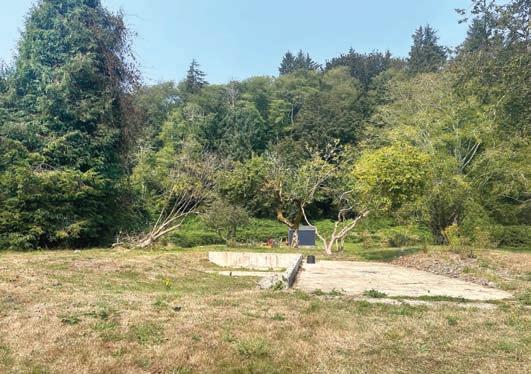
The three-acre property
is ready for future devel-opment after $250,000 in work by the Oregon Department of Environmental Quality and the United States Environmental Protection Agency.
HSammy’s Place
From Page A1
‘now what? What’s the next evolution for people to live alongside their peers,’” Chick said. “And we are in the evolution.” Plans are in their early stages, but Chick said that the team envisions a cluster of small houses that would use an ownership model and be open to a mixture of members of the IDD commu-nity and those without disabilities. The property is zoned for up to 17 units,
but Chick said that while they don’t know how many they will build, “what I can tell you is it won’t be 17.” In addition to the goal of creating a diverse community, the development will also be guided by the charity’s commitment to preserving and respecting the area’s nature. Chick said that they will not regrade the site and plan to work around trees on the property in their design. The pro-ject will also be built to universal design standards, so that all the houses are accessible to the entire community. Though details are still coming into focus, Chick said that creating more
housing options for those with IDD was part of a larger push to shift perceptions of what they can accomplish. Chick said that she also wants to work with area businesses to create employment opportuni-ties and work towards involving people with IDD in Sammy’s Place’s leadership.
Chick exudes enthusiasm about the project and gratitude that all the pieces have fallen into place to make it possible. “Had all these different things not happened and aligned perfectly we wouldn’t be forcing this,” Chick said, “but it wants to happen.”


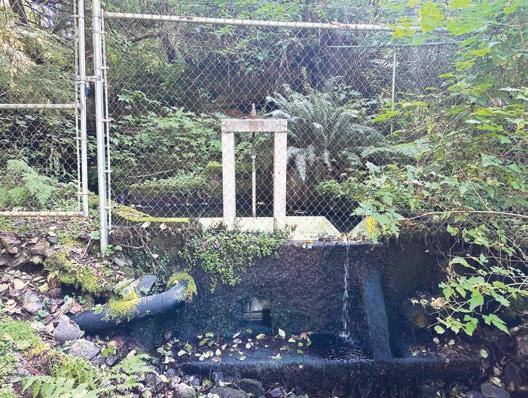
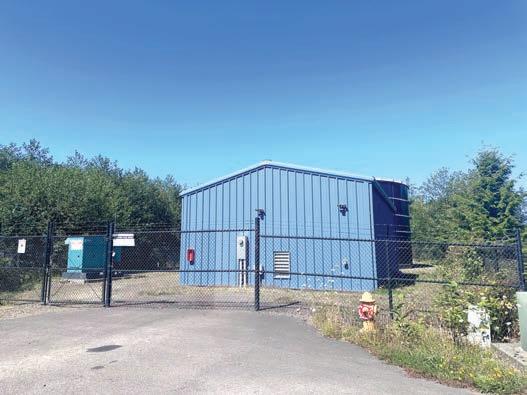
$395,000.
With this figure in hand, CMCA returned to the sellers and entered into an agree-ment that gave the association the right to purchase the land and precluded the owners from logging it in the interim. After they had entered the agreement, the association began searching for organizations to help with the purchase, contacting more than 20, before discovering the Conservation Fund. Founded in 1985, the conservation fund is a nonprofit organization that has helped to protect 9 million acres of land across the country and over 100,000 acres in Oregon. The fund supports projects that help to promote conservation and economic benefits for communities. The fund usually deploys its capital to serve as a bridge buyer and facilitate projects like the one
in Cape Meares and tries to avoid long-term ownership of projects.
In recent years, the fund has worked with Port Orford and Toledo on similar projects that pro-tected those communities’ watersheds.
John Wros, a field specialist in the northwest region for the conservation fund, said that the Cape Meares project was a perfect fit for the Conservation Fund’s mission. Wros said that in addition to helping with the financial aspect of the project, the fund was able to leverage its close working relationship with the United States Fish and Wildlife Service (USFWS), which runs the Cape Meares National Wildlife Refuge, to convince agency officials to work towards purchasing the properties.
in 2007. Since its donation the parcel has been held by the CMCA as a community forest.
The community forest parcel runs along the ridge of Cape Meares, while the recently pur-chased property abuts the new alignment of Cape Meares Road on the west as it descends from the cape to Bayocean Road.
After identifying the refuge as the destination for the property, the next hurdle was working out a final purchase agreement for the Grimm’s land, as the wildlife refuge is only allowed to pay the appraised value for property.
Stein said that overall, the CMCA had raised $270,000 in support of the project, with the por-tion not dedicated to the purchase being spent on various legal and survey costs that arose.
Now that the Conservation Fund holds the land, work can begin in earnest at USFWS to con-summate the purchase, according to Kate Iaquinto, a project leader at the agency.
Iaquinto said that to add land to the wildlife refuge, its acquisition boundary, which currently includes just the land originally designated for the refuge in 19, must be expanded.
will have the greenlight to purchase the properties, and Iaquinto said that the preliminary plan is to use funds allocated for property purchases that increase recrea-tional access to consummate the purchase. The properties already have an informal network of trails, as well as the disused old alignments of Cape Meares Road, and Iaquinto said that USFWS liked giving the public access to its refuges, where possible.


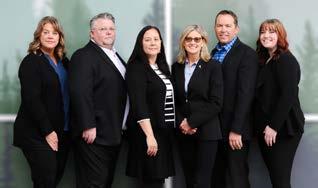
Wros said that the fund had approached USFWS about the project, helped it to conduct neces-sary surveys and evaluate the project’s feasibility and will continue to work with them to en-sure the purchase is consummated.
Adding the Grimm property, which does not border the refuge, is possible because Stimson Lumber donated 106 acres bordering the refuge to the CMCA
The first step to bridging the gap was whittling off ten acres at the property’s northern end, near the intersection of Cape Meares Loop and Bayocean Roads, which the sellers will hold on-to with the ability to develop houses.
The second was to sweeten the offer, which the CMCA stepped up to do by contributing an ad-ditional $325,000 on top of the $395,000 assessed value to bring the final purchase price up to $720,000. Of the $325,000, $189,000 came from selling the 106-acre community forest proper-ty to the Conservation Fund, while the rest came through community donations.
To accomplish that, USFWS have completed a land protection strategy for the proposed new boundaries, which has been approved by local leaders and now awaits federal approval in Washington D.C. Following that approval, staff will develop a land protection plan that will then be submitted for a National Environmental Policy Act review, including opportunities for public feedback.
“And after all that happens, which takes a little while, then we can acquire parcels within the boundary extension,” Iaquinto said.
At that point, USFWS

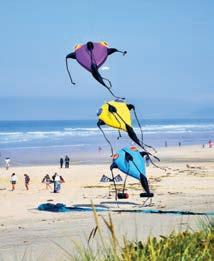



“We want to provide recreational access where we can and the parcels that the conservation fund owns have been being used by the public quite a bit prior to them being in our acquisition boundary,” Iaquinto said.
Iaquinto said that the acquisition boundary expansion process would probably take about two years to complete and said that while she and her colleagues were not certain of its success, they were hopeful.
Should the purchase be finalized, Cape Meares’s water supply, which is managed by the Oceanside Water District, will be safe from logging impacts in perpetuity and the community will be bounded on all sides by pristine forest or the water. “This means that our community will be surrounded by old growth forest and nature, which people saw as very valuable,” Stein said.
For his part, Wros said that the Conservation Fund was happy that both the buyer and seller had been willing participants in the process and praised the community for its role in the trans-fer.
“We were thrilled to help and thrilled to have been able to help but this project happened be-cause of the vigilance of the Cape Meares Community Association and Cape Meares communi-ty members,” Wros said.
Iaquinto likewise praised the community’s ingenuity and tenacity through the process, especial-ly given their lack of experience with the process.
“This community came together to do this and it’s quite incredible,” Iaquinto said, “none of them have ever done anything like this before.”